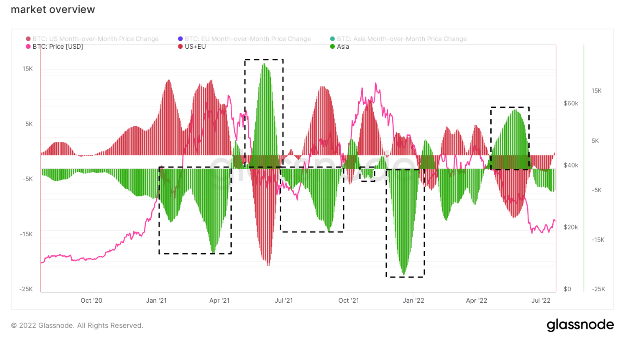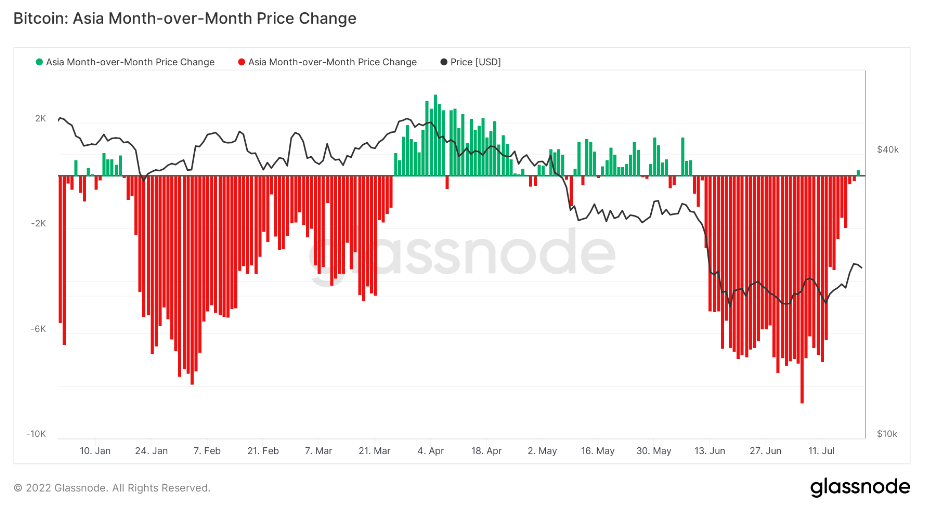Asia vs Europe and USA
To get a solid understanding of the global market, you need to zoom out of daily and weekly bars. A calculation that gives a good perspective on the market’s general health is the month-over-month (MoM) price change. This calculation shows the 30-day change in regional prices set during business hours in the US, EU and Asia. These regional prices are usually determined by calculating the cumulative sum of each region’s price changes over a 30-day period.

Analyzing MoM price change for Bitcoin from October 2021 to July 2022 reveals several interesting trends.
In early May 2022, a trend began in Asia that indicated the region’s increasingly bullish sentiment toward Bitcoin. Highlighted in the black square in the graph above, the trend shows that investors in Asia have reaped the biggest gains in the crypto industry.
The chart above clearly shows that Asian investors have dominated the crypto market for the past two years and that most of the market’s smart money seems to come from the Far East. Investors in Asia have been able to sell the early 2021 top and then buy the 2021 summer bottom, as well as sell the first pump of the summer low.
When Bitcoin fell to $40,000 in late summer last year, Asian investors were the first to buy the dip and the first to sell in November 2021 when Bitcoin regained its all-time high.
In May 2022, trading volumes in Asia were the highest since last summer, as the region took advantage of lower prices at the expense of bulk selling in the US and EU. The Luna collapse and subsequent insolvency of some of the industry’s biggest players such as Three Arrows Capital and Voyager has made Europeans and Americans more fearful than ever when it comes to the crypto market. Miner capitulation and the broader macroeconomic outlook failed to improve the situation.
However, the Asian-led narrative appears to be changing rapidly.
Data for July 2022 has shown that accumulation is happening outside Asia as well, with US and EU markets starting to accumulate collectively for the first time since early April. This may indicate that the West is beginning to see Bitcoin as a valuable asset in times of macro and geopolitical uncertainty.





